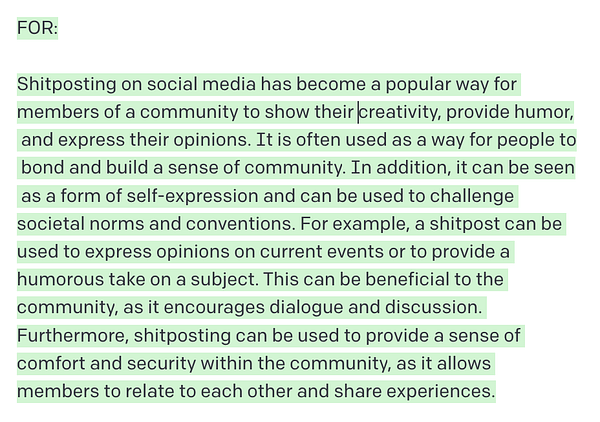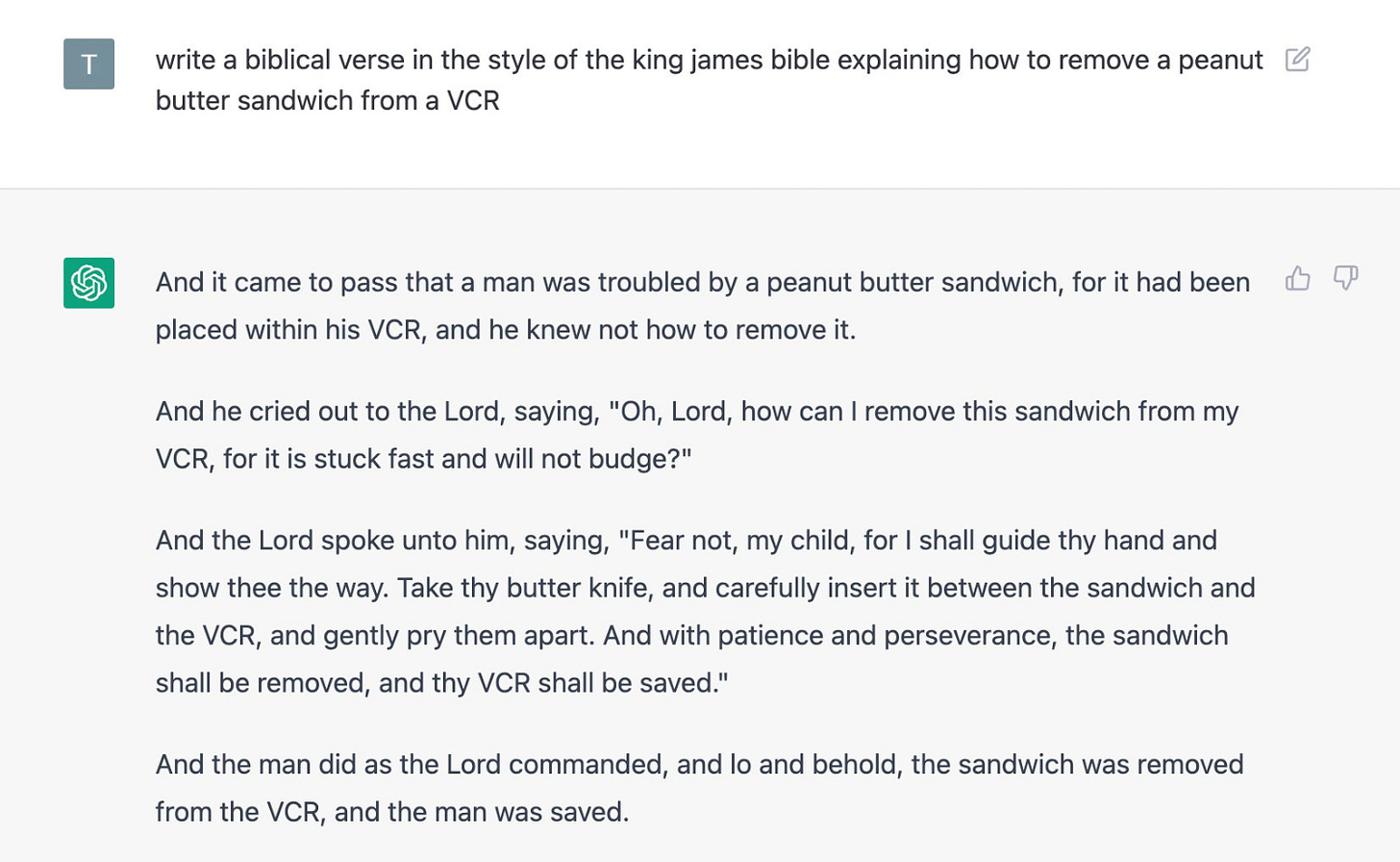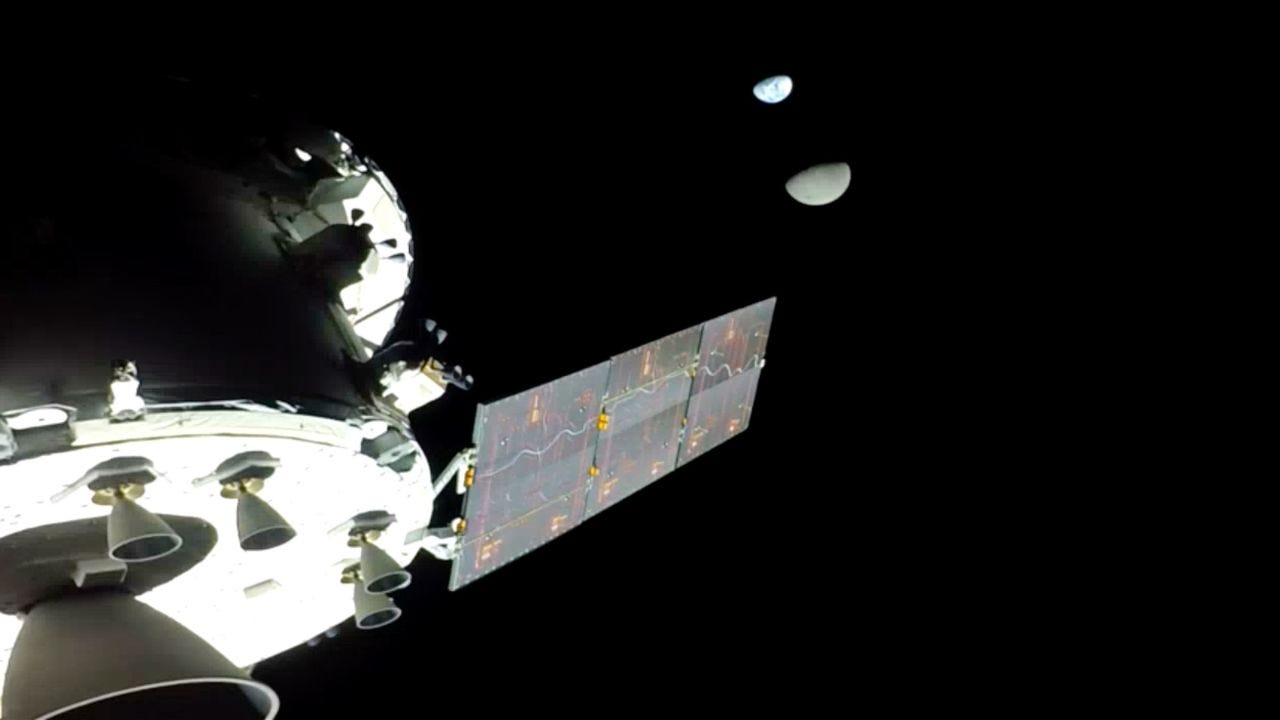Welcome to the mid-week update from New World Same Humans, a newsletter on trends, technology, and society by David Mattin.
If you’re reading this and haven’t yet subscribed, join 24,000+ curious souls on a journey to build a better future 🚀🔮
To Begin
I’m giving myself permission to play with the format of these New Week updates.
This week, four stories caught my eye. Any one of them might lead an ordinary instalment of the newsletter. Taken together, they amount to a snapshot of the future-facing terrain that NWSH inhabits.
We’re living through an incredible moment when it comes to the collision between emerging technologies and fundamental human needs. As 2022 draws to a close, it felt fitting to capture this moment in time. And to look out to the year ahead — each of these four stories is set to evolve in intriguing ways in 2023.
I’m also turning this email into a virtual time capsule, to be buried now and recovered in a NWSH instalment ten years hence. More details in the final section.
So think of this as an end of year special edition (and forgive the fact that it comes late). More Christmas extras are coming soon! But for now, let’s get into it.
📖 Next generation
This week, yet another wave of advances in generative AI.
OpenAI released a new GPT-3 model, text-davinci-003. Early indications are that the new model is a significant improvement; it’s better at following instructions, outputs higher quality writing, and more often remains coherent and useful across longform narrative.
A few days later OpenAI released ChatGPT, a version of GPT-3 optimised to respond to complex questions and enter into dialogue. Cue a storm of Tweets heralding the emergence of a whole new kind of online search:
People also noticed that davinci-003 and ChatGPT are better at rhymes, poetry, and various forms of creative writing:
As for text-to-image generation, that didn’t stand still either. Stability AI released Stable Diffusion 2.0. Image resolution has been improved by a factor of four; the tool now generates eerily convincing photorealism. New guard rails also make it harder to generate NSFW images. Here’s Stability AI founder Emad Mostaque:


⚡ NWSH Take: Text-davinci-003 feels something close to a step change; some are calling it GPT-3.5. It’s clear, if it wasn’t before, that large language models (LLMs) will have multiple breakthrough applications. Search is at the top of that list; see Metaphor, a startup experimenting with generative AI for online search. Or Consensus, a generative search engine for published scientific research. I’ve written often in this newsletter about the coming age of Virtual Companions; AI fuelled entities that become counsellors, friends, and sages to their users. With LLMs, they’re coming, and this week Open AI CEO Sam Altman pointed towards that future. // Meanwhile, it’s only three months since Stable Diffusion was made public. Now we have a quantum leap in image quality. Mostaque’s belief that these tools constitute a Gutenberg moment is credible even if you only consider text-to-image tools. But listen to interviews and you’ll learn that Stability AI is also working on text-to-music, and that the end game according to Mostaque is text to anything: movies, PPT presentations, virtual worlds. // What can you say? Rumour has it that GPT-4 is months away. We’re at the beginning of a decade-long wave of innovation. Next year is going to be insane. Who knows where we’ll be by 2032.
🚀 Give me some space
NASA’s Orion spacecraft this week reached the apex of its journey beyond the far side of the Moon.
The craft hit a point 434,523 kilometres from Earth, and 64,374 kilometres beyond the Moon, before swinging around and starting on its course back to Earth. At the midpoint of its journey it took this picture — an instant space age classic:
Orion is uncrewed, but this is the furthest from Earth a spacecraft meant for human occupation has ever travelled; the record was previously held by Apollo 13, which did have people onboard, and flew in 1970.
⚡ NWSH Take: This Orion mission is a test — the first stage of NASA’s Artemis mission to put humans back on Moon by 2025 and establish a permanent base there by end of decade. // So far, that project is more or less on track. No wonder, then, that analysts are already talking about the coming Moon economy: a new wave of startups catering to our next foray into space. Meanwhile, with China planning its own base on the Moon for 2028, I’ve written on how the Moon is about to become a new site of geopolitical tension; NASA are drawing up frameworks to deal with lunar conflict. // The coming 12 months, then, will set the stage for a new space age: one intended to see us establish the Moon as a base from which we set out to Mars and beyond. When I revisit this in ten years, it should be possible to email humanity’s lunar waystation.
🧠 Trick of the mind
Brain-machine interface startup Neuralink hosted a Show and Tell event this week.
On stage, Elon Musk announced that the company is around six months away from starting human trials of its N1 brain implant. In the meantime, trials on animals continue. Musk played a video that showed a monkey using the implant to ‘telepathically type’ — using his mind to control an on-screen cursor and type the words ‘Welcome to Show and Tell’ by directing his attention to highlighted letters.
⚡ NWSH Take: Neuralink won’t be the first to implant these kinds of interface chips in human brains; another US startup, Synchron, began human trials in Australia in 2020. And the technology has been around for around two decades. Regulatory approval, and proof that the technology is safe for humans, has been the major roadblock. // Musk previously said that human trials would begin in 2020, and then in 2022. But put this news announcement together with Synchron’s ongoing work and other developments, and it’s clear that we’re approaching technologies that will be transformative for people who are paralysed, and may eventually revolutionise the way all of us interact with technology. Neuralink is waiting for FDA approval before it starts human trials. The world will watch for an update in the first few months of 2023.
🧬 Copy and paste
Also this week, a significant CRISPR advance.
MIT scientists showcased a new technique that could massively upscale the usefulness of CRISPR gene editing.
The ‘drag and drop’ method, which the scientists are calling PASTE, allows for the insertion of large sections of DNA — as long as 36,000 DNA base pairs — into human cells. That means it could prove useful for the treatment of diseases caused by faulty genes with large numbers of mutations, including cystic fibrosis.
Omar Abudayyeh, a McGovern Fellow at MIT’s McGovern Institute for Brain Research, said:
‘It’s a new genetic way of potentially targeting these really hard to treat diseases. We wanted to work toward what gene therapy was supposed to do at its original inception, which is to replace genes, not just correct individual mutations.’
The full paper was published this week in the journal Nature Biotechnology.
⚡ NWSH Take: The FDA approved a revolutionary drug treatment for cystic fibrosis in 2019. It doesn’t work for everyone, and it costs over £100,000 a year per patient. Now, we’re talking about genetic editing technologies that will cut and paste this awful disease out of existence. There’s still work to be done before PASTE can be used in this way. But it seems we’re close. // This new PASTE technique has implications when it comes to another NWSH obsession: longevity. There’s long been hope that CRISPR could help us modify the action of genes that regulate ageing. But those genes are often long and complex. Now, PASTE raises the possibility that we’ll be able to get a handle on them. Back in New Week #51 I wrote about Altos Labs, a new Silicon Valley Startup pursuing the secrets to eternal life. And in NWSH #44 I wrote about the ways in which ageing populations are reshaping societies in the Global North; the trends outlined in that essay may be set to intensify in entirely new ways.
Time to be Alive
Thanks for reading this week.
I’m turning this week’s instalment into a time capsule, buried now and intended to be recovered by my future self. I’ll revisit this snapshot of the closing weeks of 2022 in December 2032, and reflect on the ideas discussed here and what happened in the intervening time. The calendar reminder is set; now all I need to do is survive the next ten years.
It’s impossible to know where we’ll be by then. All we can be sure of is that the ongoing collision between new technologies and our eternal shared nature will continue to underpin our collective story.
This newsletter will keep watching every step of the way. And sharing that journey with you means a lot.
If you’ve enjoyed NWSH this year, why not forward this email to someone who’d also enjoy it? Or share it across one of your social networks, with a note on why you found it valuable. Remember: the larger and more diverse the NWSH community becomes, the better for all of us.
I’ll be back next week. Until then, be well,
David.
P.S Huge thanks to Nikki Ritmeijer for the illustration at the top of this email. And to Monique van Dusseldorp for additional research and analysis.























Share this post